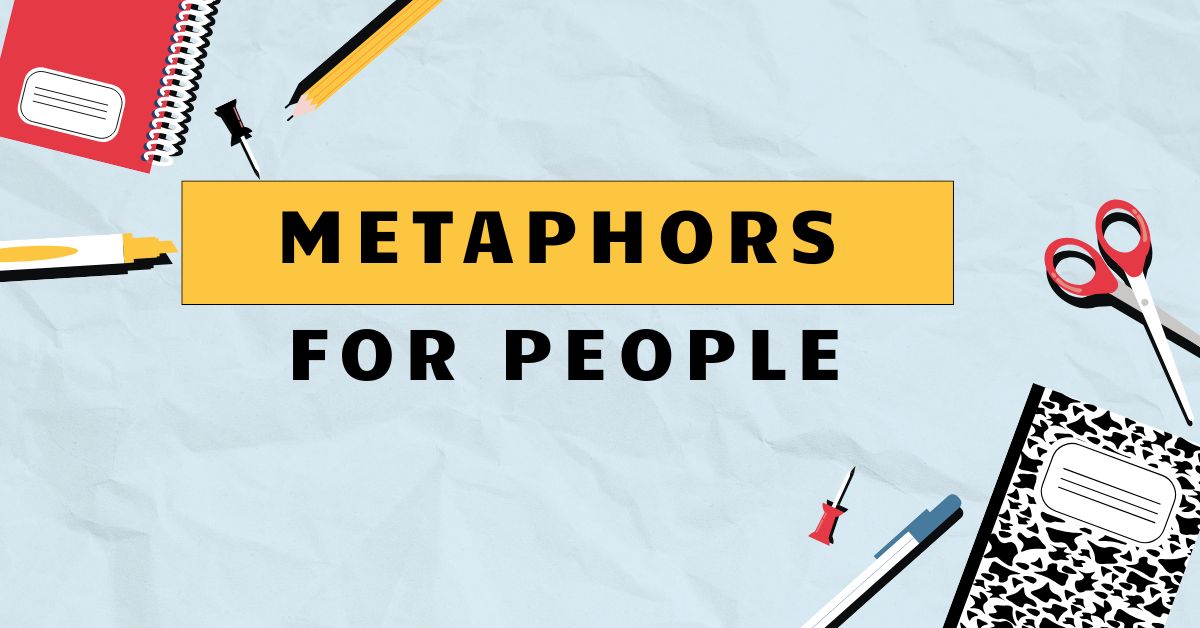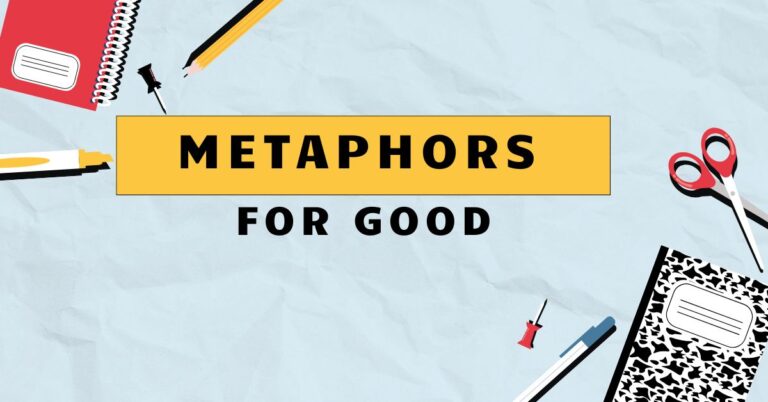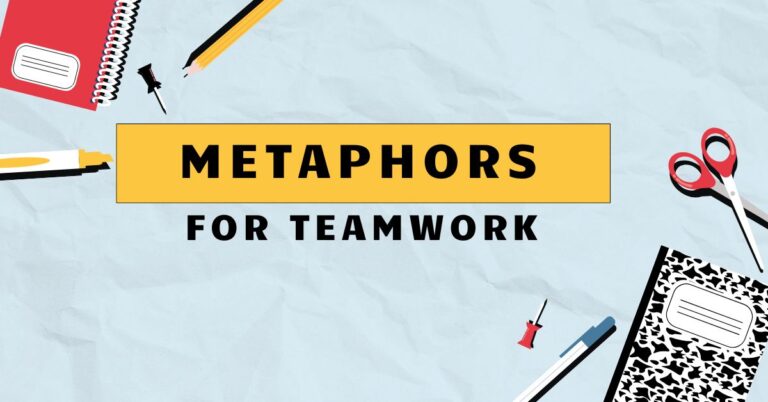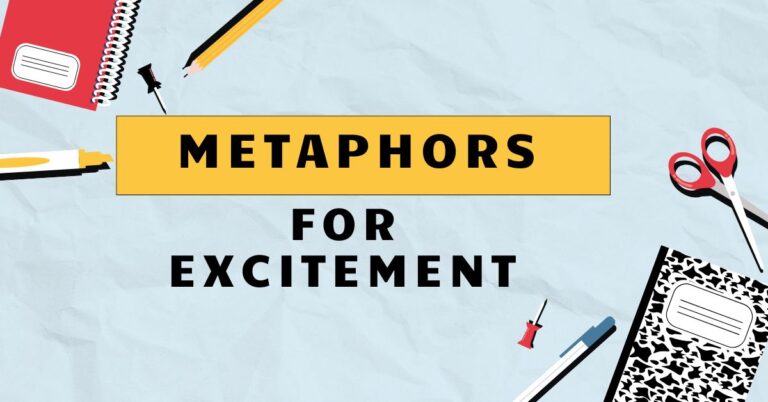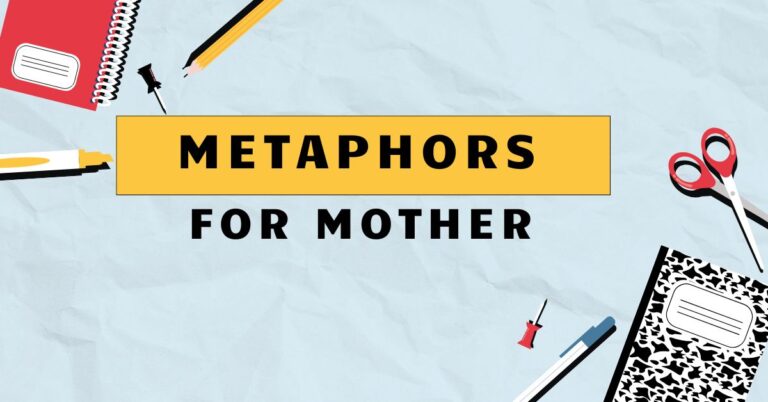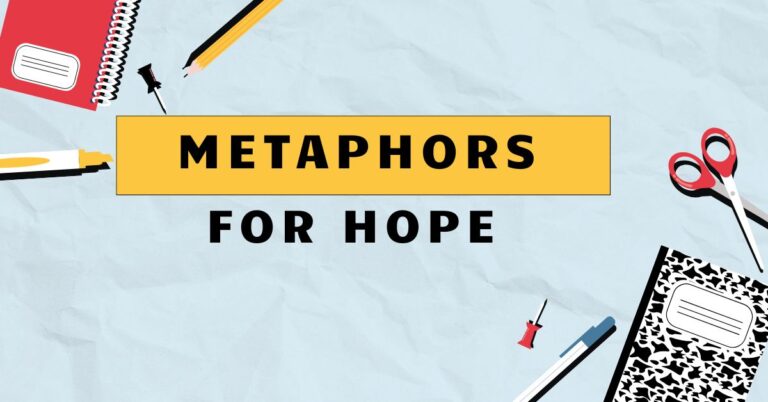49 Metaphors for People: Understanding Figurative Language
Metaphors are powerful tools that allow us to understand abstract concepts by relating them to something more concrete. When applied to people, metaphors can reveal deeper insights into personality, behavior, and character.
Understanding these figurative expressions enhances our comprehension of literature, improves communication, and allows for more nuanced interpretations of everyday language. This article explores the diverse world of metaphors for people, providing definitions, examples, and practical exercises for learners of all levels.
By delving into the nuances of metaphorical language, we gain a richer understanding of not only the English language itself but also the human condition. This knowledge is invaluable for students, writers, educators, and anyone seeking to improve their communication skills and deepen their understanding of human nature.
Whether you are a beginner or an advanced learner, this comprehensive guide will equip you with the tools to recognize, interpret, and effectively use metaphors in your own writing and speech.
Table of Contents
- Definition of Metaphor
- Structural Breakdown of Metaphors
- Types and Categories of Metaphors for People
- Examples of Metaphors for People
- Usage Rules for Metaphors
- Common Mistakes with Metaphors
- Practice Exercises
- Advanced Topics in Metaphorical Language
- Frequently Asked Questions
- Conclusion
Definition of Metaphor
Ametaphoris a figure of speech that directly compares two unrelated things, asserting that they are the same for the purpose of highlighting a particular quality or characteristic. Unlike similes, which use words such as “like” or “as” to make a comparison, metaphors make a direct assertion of equivalence.
This creates a more vivid and impactful image in the reader’s or listener’s mind.
In essence, a metaphor transfers qualities from one thing (thesource) to another (thetarget). For example, in the metaphor “He is a lion in battle,” the source is “lion” and the target is “he.” The qualities of a lion, such as bravery and strength, are transferred to the person being described.
This allows us to understand the person’s behavior in a more profound and memorable way.
Classification of Metaphors
Metaphors can be classified based on various criteria, including:
- Explicit Metaphors: These are direct comparisons where both the source and target are clearly stated.
- Implicit Metaphors: These are subtle and indirect, where the source is implied rather than explicitly mentioned.
- Extended Metaphors: These are metaphors that are developed over several lines or even an entire piece of writing.
- Dead Metaphors: These are metaphors that have become so commonplace that they are no longer recognized as figurative language.
Function of Metaphors
The primary function of a metaphor is to enhance understanding and create a more vivid image in the reader’s or listener’s mind. Metaphors can:
- Simplify complex ideas by relating them to something more familiar.
- Evoke emotions and create a stronger connection with the audience.
- Add depth and nuance to writing, making it more engaging and memorable.
- Offer new perspectives and insights into the subject being described.
Contexts of Metaphor Usage
Metaphors are used in a wide range of contexts, including:
- Literature: To create imagery, develop themes, and convey deeper meanings.
- Poetry: To express emotions, evoke feelings, and create a unique voice.
- Everyday Speech: To communicate ideas in a more engaging and relatable way.
- Business and Marketing: To create memorable slogans, explain complex concepts, and persuade customers.
- Science and Education: To simplify complex theories and make them more accessible to learners.
Structural Breakdown of Metaphors
Understanding the structure of a metaphor involves identifying its key components: the tenor (or target), the vehicle (or source), and the ground (the shared characteristics between the tenor and the vehicle). Let’s break down each element:
- Tenor (Target): This is the subject to which the metaphor is applied. It is the person, object, or idea that is being described in a figurative way.
- Vehicle (Source): This is the object or concept that is used to describe the tenor. It is the thing that the tenor is being compared to.
- Ground: This is the shared characteristic or similarity between the tenor and the vehicle. It is the basis for the comparison and the reason why the metaphor works.
For example, in the metaphor “He is a rock,” the tenor is “he,” the vehicle is “rock,” and the ground is the shared characteristic of stability and strength. The metaphor suggests that the person being described is reliable and unwavering, just like a rock.
Patterns and Rules in Metaphor Construction
While there are no strict rules for creating metaphors, there are some general patterns and guidelines to follow:
- Clarity: The metaphor should be clear and easy to understand. The connection between the tenor and the vehicle should be apparent.
- Relevance: The vehicle should be relevant to the tenor. The shared characteristic should be meaningful and significant.
- Originality: The metaphor should be fresh and original. Avoid clichés and overused expressions.
- Consistency: If using an extended metaphor, maintain consistency throughout the passage. Avoid mixing metaphors or shifting the ground of the comparison.
Identifying and Analyzing Metaphors
To identify and analyze a metaphor, follow these steps:
- Identify the two things being compared: Determine the tenor and the vehicle.
- Determine the shared characteristic: Identify the ground, or the similarity between the tenor and the vehicle.
- Interpret the meaning: Explain what the metaphor suggests about the tenor.
By following these steps, you can gain a deeper understanding of the meaning and impact of metaphors in literature, speech, and everyday communication.
Types and Categories of Metaphors for People
Metaphors for people can be categorized based on the qualities or characteristics they emphasize. Here are some common types:
Animal Metaphors
These metaphors compare people to animals, highlighting certain traits associated with those animals. For example, “He is a fox” suggests cunning and intelligence, while “She is a lamb” implies innocence and gentleness.
Nature Metaphors
These metaphors compare people to elements of nature, such as plants, landscapes, or weather phenomena. For example, “He is a mountain” suggests strength and stability, while “She is a gentle breeze” implies calmness and serenity.
Object Metaphors
These metaphors compare people to inanimate objects, emphasizing their qualities or functions. For example, “He is a machine” suggests efficiency and precision, while “She is a compass” implies guidance and direction.
Color Metaphors
These metaphors use colors to describe a person’s character or emotions. For example, “He is green with envy” suggests jealousy, while “She is feeling blue” implies sadness.
Food Metaphors
These metaphors compare people to food items, often highlighting their personality or attractiveness. For example, “He is the salt of the earth” suggests honesty and integrity, while “She is a sweet as pie” implies kindness and charm.
Abstract Metaphors
These metaphors compare people to abstract concepts, such as time, emotions, or ideas. For example, “He is a force to be reckoned with” suggests power and influence, while “She is a beacon of hope” implies inspiration and guidance.
Examples of Metaphors for People
Here are some examples of metaphors for people, categorized by type, with explanations of their meanings.
Table 1: Animal Metaphors
The following table provides examples of how animals are used metaphorically to describe people, highlighting specific characteristics associated with each animal.
| Metaphor | Meaning |
|---|---|
| He is a lion. | He is brave and courageous. |
| She is a fox. | She is cunning and sly. |
| He is a bear. | He is grumpy and ill-tempered. |
| She is a lamb. | She is innocent and gentle. |
| He is an owl. | He is wise and knowledgeable. |
| She is a peacock. | She is vain and showy. |
| He is a snake. | He is treacherous and deceitful. |
| She is a dove. | She is peaceful and harmonious. |
| He is a wolf in sheep’s clothing. | He appears harmless but is actually dangerous. |
| She is a busy bee. | She is hardworking and diligent. |
| He is a stubborn mule. | He is obstinate and unwilling to change his mind. |
| She is a scaredy cat. | She is easily frightened. |
| He is a lone wolf. | He prefers to be alone and independent. |
| She is a social butterfly. | She is outgoing and enjoys socializing. |
| He is a sitting duck. | He is vulnerable and an easy target. |
| She is a nightingale. | She has a beautiful singing voice. |
| He is a hawk. | He is observant and perceptive. |
| She is a spider. | She is manipulative and cunning. |
| He is a shark. | He is ruthless and aggressive. |
| She is a turtle. | She is slow and cautious. |
| He is a rat. | He is a traitor and betrayer. |
| She is a canary. | She is fragile and delicate. |
Table 2: Nature Metaphors
This table illustrates how natural elements are used metaphorically to describe personal qualities and characteristics.
| Metaphor | Meaning |
|---|---|
| He is a mountain. | He is strong and unyielding. |
| She is a sunflower. | She is bright and cheerful. |
| He is a storm. | He is turbulent and unpredictable. |
| She is a gentle breeze. | She is calming and soothing. |
| He is a towering oak. | He is resilient and enduring. |
| She is a blooming rose. | She is beautiful and vibrant. |
| He is a deep ocean. | He is mysterious and profound. |
| She is a ray of sunshine. | She brings joy and happiness. |
| He is a raging fire. | He is passionate and intense. |
| She is a field of wildflowers. | She is diverse and colorful. |
| He is a sturdy tree. | He is reliable and supportive. |
| She is a babbling brook. | She is talkative and lively. |
| He is a desert. | He is barren and unfeeling. |
| She is a lush forest. | She is nurturing and abundant. |
| He is a volcano. | He is explosive and volatile. |
| She is a calm lake. | She is serene and peaceful. |
| He is a shooting star. | He is brilliant but fleeting. |
| She is a rainbow after the storm. | She brings hope and promise. |
| He is a solid rock. | He is dependable and steadfast. |
| She is a blossoming garden. | She is growing and thriving. |
| He is a dense fog. | He is confusing and unclear. |
| She is a clear sky. | She is honest and transparent. |
Table 3: Object Metaphors
This table provides examples of inanimate objects used metaphorically to describe people, focusing on their functional or symbolic attributes.
| Metaphor | Meaning |
|---|---|
| He is a machine. | He is efficient and tireless. |
| She is a compass. | She provides guidance and direction. |
| He is a fortress. | He is protective and impenetrable. |
| She is a mirror. | She reflects the truth. |
| He is a ticking time bomb. | He is about to explode with anger. |
| She is a delicate vase. | She is fragile and easily broken. |
| He is a well-oiled machine. | He is functioning perfectly. |
| She is a guiding light. | She inspires and leads others. |
| He is a brick wall. | He is unyielding and unresponsive. |
| She is a safety net. | She provides security and support. |
| He is a broken record. | He is repetitive and annoying. |
| She is a blank canvas. | She is full of potential. |
| He is a rusty cog. | He is outdated and ineffective. |
| She is a sharp knife. | She is incisive and perceptive. |
| He is a loose cannon. | He is unpredictable and dangerous. |
| She is a sturdy bridge. | She connects people and ideas. |
| He is a complex puzzle. | He is difficult to understand. |
| She is a warm blanket. | She provides comfort and security. |
| He is a solid foundation. | He is stable and reliable. |
| She is a treasure chest. | She is full of valuable qualities. |
| He is a worn-out shoe. | He is tired and exhausted. |
| She is a shining star. | She is talented and successful. |
Table 4: Color Metaphors
This table presents examples of how colors are used metaphorically to describe a person’s emotions, personality, or state of being.
| Metaphor | Meaning |
|---|---|
| He is green with envy. | He is jealous and resentful. |
| She is feeling blue. | She is sad and depressed. |
| He is seeing red. | He is angry and enraged. |
| She is a ray of sunshine. | She is cheerful and optimistic. |
| He is in the pink. | He is healthy and thriving. |
| She is a black sheep. | She is an outcast and different. |
| He is feeling white as a ghost. | He is pale and frightened. |
| She has a golden heart. | She is kind and compassionate. |
| He is painting the town red. | He is partying and celebrating. |
| She is a true blue friend. | She is loyal and dependable. |
| He is graying with worry. | He is anxious and stressed. |
| She is living in a black and white world. | She sees things as simple and binary. |
| He is feeling black and blue. | He is bruised and injured. |
| She is seeing the world through rose-colored glasses. | She is optimistic and idealistic. |
| He is a silver fox. | He is a handsome older man. |
| She is a red hot sensation. | She is exciting and popular. |
| He is feeling anything but golden. | He is feeling unwell or unhappy. |
| She is in a purple haze. | She is confused or disoriented. |
| He is feeling burnt out. | He is exhausted and overwhelmed. |
| She is the orange of my eye. | She is very important to me. |
Table 5: Food Metaphors
This table provides examples of how food items are used metaphorically to describe people, often focusing on their personality, attractiveness, or value.
| Metaphor | Meaning |
|---|---|
| He is the salt of the earth. | He is honest and virtuous. |
| She is as sweet as pie. | She is kind and charming. |
| He is a tough nut to crack. | He is difficult to understand or deal with. |
| She is a hot potato. | She is a controversial or problematic issue. |
| He is full of baloney. | He is talking nonsense. |
| She is a peach. | She is delightful and pleasant. |
| He is a couch potato. | He is lazy and inactive. |
| She is a cupcake. | She is cute and adorable. |
| He is a breadwinner. | He is the primary source of income. |
| She is the apple of his eye. | She is cherished and beloved. |
| He is a cream puff. | He appears tough but is actually gentle. |
| She is a smart cookie. | She is intelligent and capable. |
| He is a hard pill to swallow. | He is a difficult truth to accept. |
| She is a cherry on top. | She is an added bonus or delight. |
| He is a meathead. | He is unintelligent and muscular. |
| She is a sugar plum. | She is delightful and charming. |
| He is a lemon. | He is defective or unreliable. |
| She is a piece of cake. | She is easy to deal with. |
| He is a basket case. | He is emotionally unstable. |
| She is a fine wine. | She gets better with age. |
Usage Rules for Metaphors
Using metaphors effectively requires understanding certain rules and guidelines. While metaphors are creative expressions, adhering to some principles ensures clarity and impact.
Avoid Mixed Metaphors
Amixed metaphorcombines two or more incompatible metaphors, creating a nonsensical or confusing image. For example, “He is burning the candle at both ends to keep his head above water” mixes the metaphor of burning a candle with the metaphor of staying afloat.
To avoid this, ensure that the images and concepts within the metaphor are consistent and logically related.
Maintain Consistency
When using an extended metaphor, maintain consistency throughout the passage. Avoid shifting the ground of the comparison or introducing unrelated images.
For example, if you start by comparing someone to a tree, continue to develop the metaphor with related imagery, such as roots, branches, and leaves.
Consider the Audience
The effectiveness of a metaphor depends on the audience’s understanding and cultural background. Choose metaphors that are relevant and relatable to your audience.
Avoid using obscure or culturally specific references that may not be understood by everyone.
Use Sparingly
While metaphors can enhance writing, overuse can make it seem forced or contrived. Use metaphors sparingly and only when they add value to the text.
Focus on quality over quantity, and ensure that each metaphor serves a specific purpose.
Be Original
Try to create fresh and original metaphors. Avoid clichés and overused expressions that have lost their impact.
A well-crafted, original metaphor can surprise and delight the reader, creating a more memorable and engaging experience.
Common Mistakes with Metaphors
Even experienced writers can make mistakes when using metaphors. Here are some common errors to avoid:
Misunderstanding the Ground
Failing to understand the shared characteristic between the tenor and the vehicle can lead to ineffective or confusing metaphors. For example, comparing someone to a “brick” without considering the intended quality (e.g., strength, solidity) can result in a weak or nonsensical comparison.
Using Clichés
Relying on clichés or overused metaphors can make writing seem uninspired and predictable. For example, “He is as strong as an ox” is a common cliché that lacks originality.
Instead, try to create fresh and imaginative comparisons that capture the reader’s attention.
Overusing Metaphors
Using too many metaphors in a single passage can overwhelm the reader and detract from the overall message. Use metaphors judiciously and only when they add value to the text.
Inconsistent Imagery
Shifting the imagery within a metaphor can create confusion and undermine its effectiveness. For example, if you start by comparing someone to a “ship,” avoid introducing unrelated images, such as “mountains” or “deserts.”
Incorrect Examples
| Incorrect | Correct | Explanation |
|---|---|---|
| He is a burning candle in the ocean. | He is a guiding light in the darkness. | The original mixes incompatible images. The revision uses a more coherent and relevant metaphor. |
| She is as busy as a bee in the desert. | She is as busy as a bee in a hive. | The original uses an inappropriate setting. The revision provides a more logical and fitting context. |
| He is a rock and a rolling stone. | He is a rolling stone. | The original mixes two contradictory metaphors. The revision uses a single, consistent image. |
| She is a shining star, but also a hidden gem. | She is a shining star. | The original presents conflicting images. The revision focuses on a single, clear metaphor. |
Practice Exercises
Test your understanding of metaphors with these practice exercises.
Exercise 1: Identifying Metaphors
Identify the metaphor in each sentence and explain its meaning.
| Question | Answer |
|---|---|
| 1. He is a bottomless pit when it comes to food. | Metaphor: “bottomless pit.” Meaning: He eats a lot. |
| 2. She is a whirlwind of energy. | Metaphor: “whirlwind.” Meaning: She is very energetic and active. |
| 3. He is a shadow of his former self. | Metaphor: “shadow.” Meaning: He is weaker or less capable than he used to be. |
| 4. She is a walking encyclopedia. | Metaphor: “walking encyclopedia.” Meaning: She is very knowledgeable. |
| 5. He is a diamond in the rough. | Metaphor: “diamond in the rough.” Meaning: He has hidden potential. |
| 6. She is a beacon of hope in a dark world. | Metaphor: “beacon of hope.” Meaning: She provides guidance and inspiration. |
| 7. He is a ticking time bomb. | Metaphor: “ticking time bomb.” Meaning: He is about to explode with anger. |
| 8. She is a breath of fresh air. | Metaphor: “breath of fresh air.” Meaning: She is refreshing and invigorating. |
| 9. He is a broken record. | Metaphor: “broken record.” Meaning: He is repetitive and annoying. |
| 10. She is a work of art. | Metaphor: “work of art.” Meaning: She is beautiful and exquisite. |
Exercise 2: Creating Metaphors
Create a metaphor to describe each person based on the given characteristic.
| Characteristic | Metaphor |
|---|---|
| 1. Someone who is very brave. | He is a lionheart. |
| 2. Someone who is very intelligent. | She is a walking brain. |
| 3. Someone who is very stubborn. | He is a mule. |
| 4. Someone who is very kind. | She is an angel. |
| 5. Someone who is very energetic. | He is a live wire. |
| 6. Someone who is very calm. | She is a serene lake. |
| 7. Someone who is very mysterious. | He is an enigma. |
| 8. Someone who is very supportive. | She is a pillar of strength. |
| 9. Someone who is very ambitious. | He is a shooting star. |
| 10. Someone who is very creative. | She is a fountain of ideas. |
Exercise 3: Correcting Mixed Metaphors
Identify and correct the mixed metaphors in the following sentences.
| Question | Answer |
|---|---|
| 1. He is burning the midnight oil to climb the ladder of success. | Corrected: He is burning the midnight oil to achieve success. |
| 2. She is skating on thin ice to keep her head above water. | Corrected: She is skating on thin ice to avoid trouble. |
| 3. He is a diamond in the rough with a heart of gold. | Corrected: He is a diamond in the rough. OR He has a heart of gold. |
| 4. She is a ray of sunshine in a sea of troubles. | Corrected: She is a ray of sunshine in a dark room. |
| 5. He is a rolling stone who always keeps his feet on the ground. | Corrected: He is a rolling stone. OR He always keeps his feet on the ground. |
| 6. She is a blank canvas ready to hit the ground running. | Corrected: She is a blank canvas ready to be filled. |
| 7. He is a wolf in sheep’s clothing with a silver lining. | Corrected: He is a wolf in sheep’s clothing. |
| 8. She is a smooth operator who always hits a home run. | Corrected: She is a smooth operator. |
| 9. He is a tough nut to crack who is also a piece of cake. | Corrected: He is a tough nut to crack. |
| 10. She is a shining star who is also a diamond in the rough. | Corrected: She is a shining star. |
Advanced Topics in Metaphorical Language
For advanced learners, exploring deeper aspects of metaphorical language can enhance comprehension and creative expression.
Conceptual Metaphors
Conceptual metaphors are fundamental cognitive structures that shape our understanding of abstract concepts. They involve mapping one domain of experience (the source) onto another (the target).
For example, the conceptual metaphor “ARGUMENT IS WAR” frames arguments as battles, influencing how we perceive and engage in them. Understanding conceptual metaphors can provide insights into cultural values and cognitive processes.
Metaphor and Cognition
Metaphor is not just a linguistic device but also a cognitive tool that shapes our thoughts and perceptions. Research in cognitive linguistics has shown that metaphors influence how we reason, solve problems, and make decisions.
By studying the relationship between metaphor and cognition, we can gain a deeper understanding of the human mind.
Metaphor in Different Genres
Metaphors are used differently across various genres, such as poetry, fiction, journalism, and scientific writing. Analyzing how metaphors function in different contexts can reveal the unique conventions and stylistic features of each genre.
For example, poetry often employs highly imaginative and evocative metaphors, while scientific writing tends to use more precise and technical metaphors.
Metaphor and Translation
Translating metaphors across languages can be challenging due to cultural differences and linguistic constraints. Some metaphors may not have direct equivalents in other languages, requiring translators to find creative solutions or adapt the metaphor to suit the target audience.
Studying metaphor and translation can shed light on the complexities of cross-cultural communication.
Frequently Asked Questions
Here are some frequently asked questions about metaphors:
- What is the difference between a metaphor and a simile?
A metaphor directly equates two things, while a simile uses “like” or “as” to make a comparison. For example, “He is a lion” is a metaphor, while “He is like a lion” is a simile.
- How can I identify a metaphor in a sentence?
Look for a statement that compares two unrelated things without using “like” or “as.” The comparison should highlight a shared characteristic or quality.
- What is a mixed metaphor?
A mixed metaphor combines two or more incompatible metaphors, creating a nonsensical or confusing image. For example, “He is burning the candle at both ends to keep his head above water” is a mixed metaphor.
- Why are metaphors important in writing?
Metaphors can enhance understanding, create vivid imagery, evoke emotions, and add depth and nuance to writing. They make writing more engaging and memorable.
- How can I avoid using clichés in my metaphors?
Try to create fresh and original comparisons that are specific and relevant to the subject you are describing. Avoid using overused expressions that have lost their impact.
- What are some common types of metaphors?
Some common types of metaphors include animal metaphors, nature metaphors, object metaphors, color metaphors, and food metaphors.
- Can metaphors be used in everyday speech?
Conclusion
Metaphors are indispensable tools for enriching language and deepening understanding. By directly comparing seemingly unrelated concepts, metaphors allow us to perceive qualities and connections that would otherwise remain hidden.
Whether you’re describing a person’s character, conveying complex emotions, or adding stylistic flair to your writing, the effective use of metaphors can significantly enhance your communication.
Understanding the structural components of metaphors—the tenor, vehicle, and ground—enables a more analytical approach to both interpreting and crafting these figurative expressions. Recognizing different categories of metaphors, such as those involving animals, nature, objects, colors, and food, provides a broad palette for creative expression.
However, it’s crucial to adhere to usage rules, such as avoiding mixed metaphors and maintaining consistency, to ensure clarity and impact.
By practicing the identification and creation of metaphors, and by correcting common mistakes, you can refine your skills and develop a more nuanced understanding of metaphorical language. Advanced topics, like conceptual metaphors and their cognitive implications, offer further avenues for exploration, revealing the profound influence of metaphor on thought and culture.
As you continue to explore and experiment with metaphors, you’ll discover new ways to express ideas, evoke emotions, and connect with your audience on a deeper level, making your language more vibrant and compelling.

